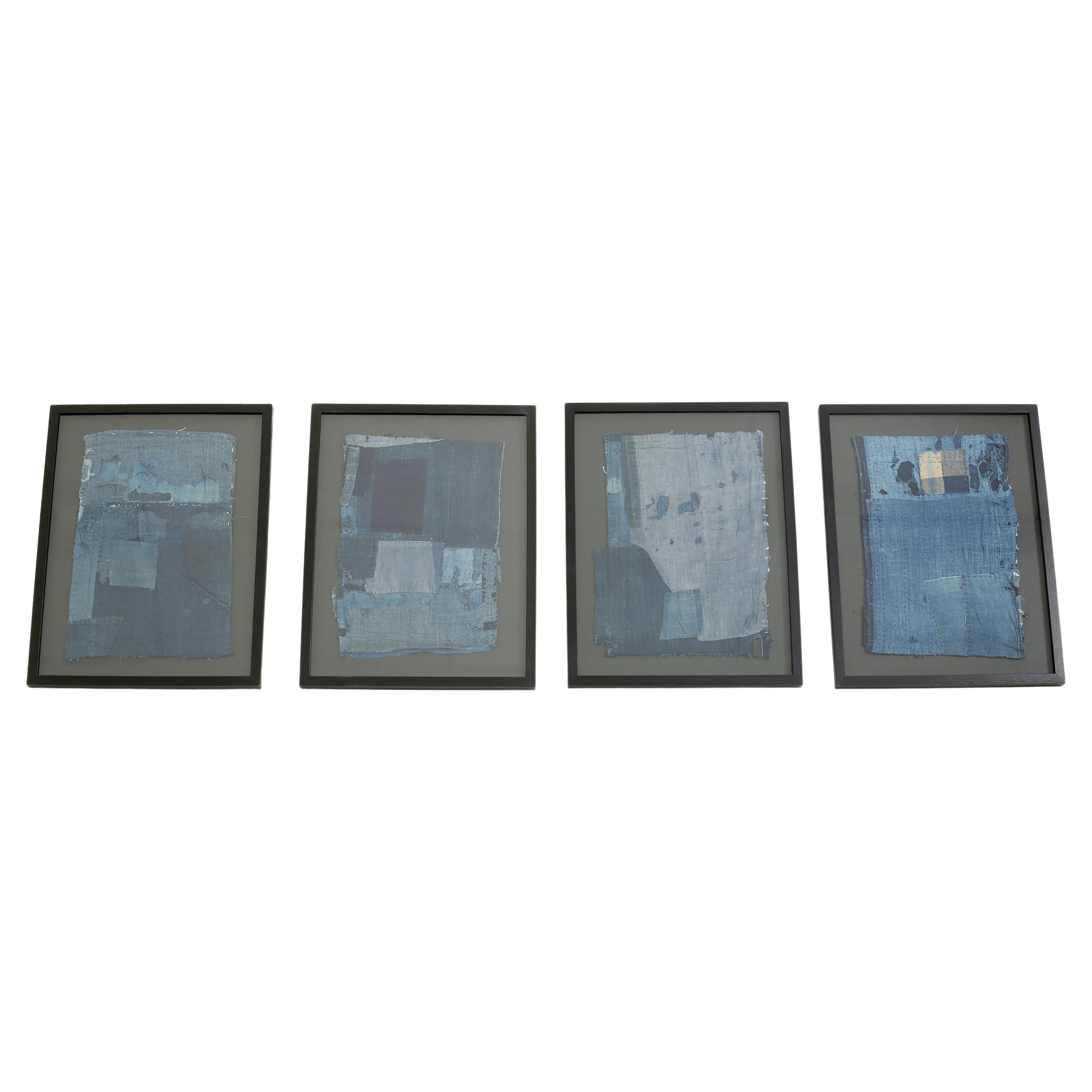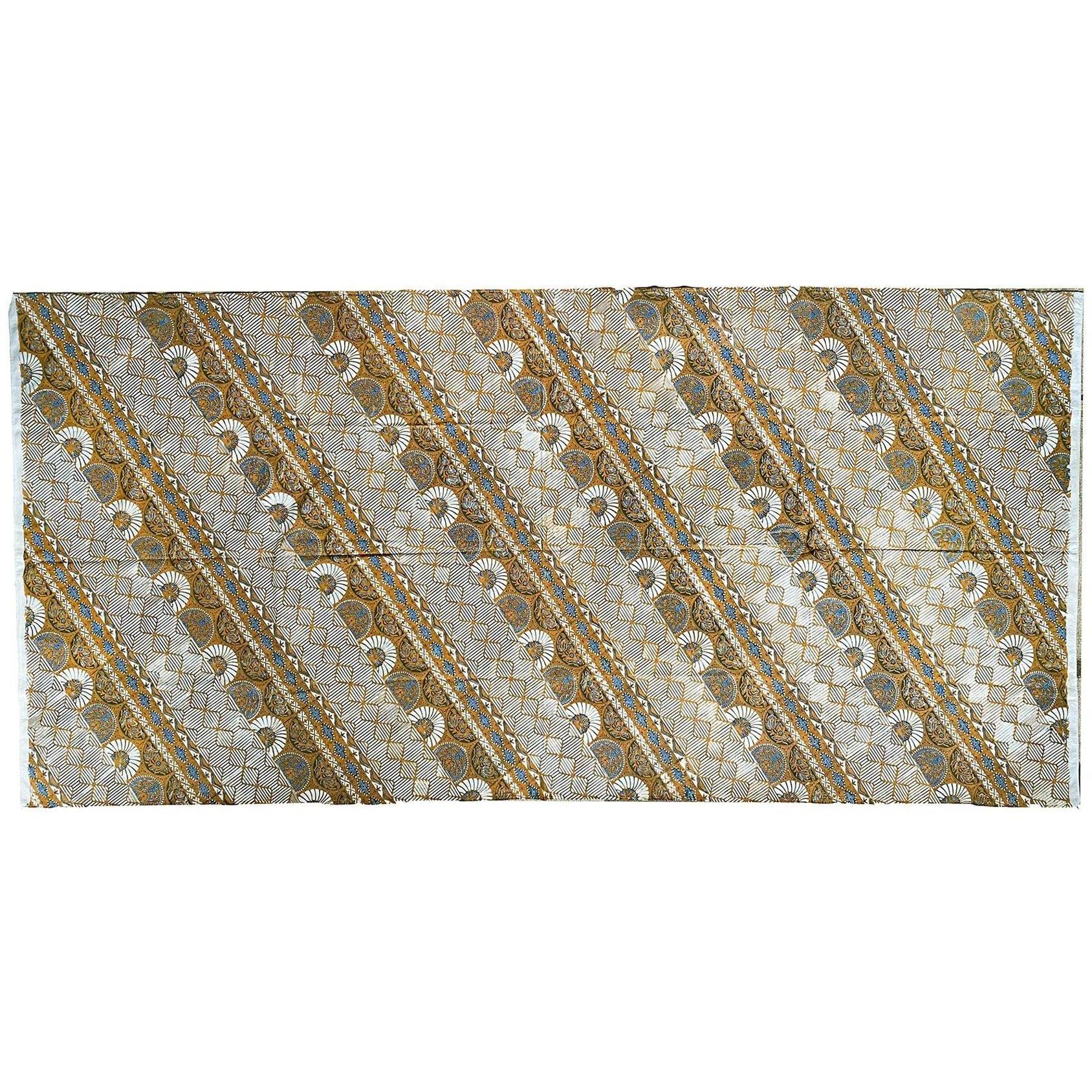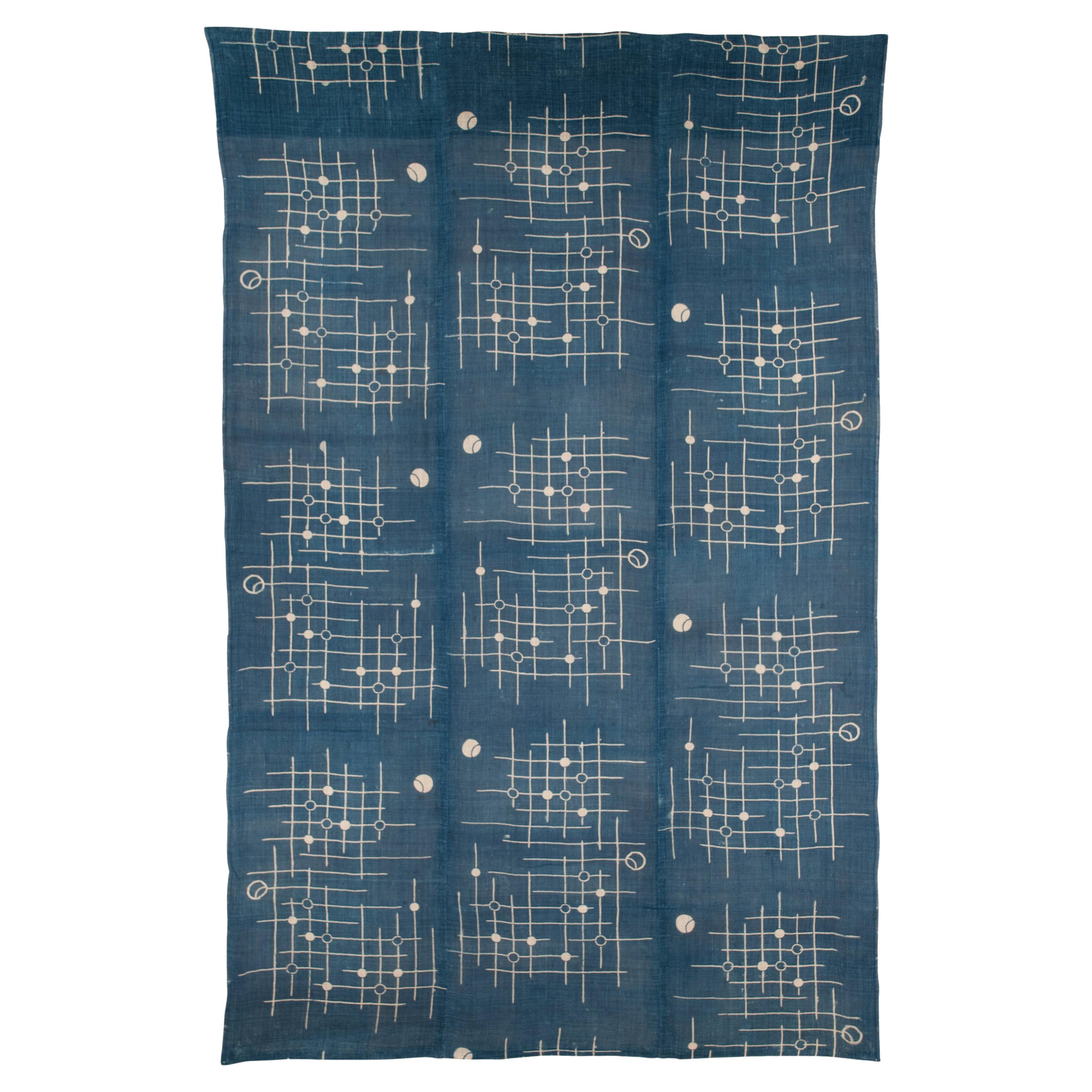Items Similar to Japanese Sashiko-stitched Cotton Rodogi Work Coat, Early 20th Century
Want more images or videos?
Request additional images or videos from the seller
1 of 7
Japanese Sashiko-stitched Cotton Rodogi Work Coat, Early 20th Century
About the Item
Sashiko-stitched cotton Rodogi work coat, early 20th century, Yamagata Prefecture, Japan
A full length coat composed of indigo-dyed cotton with vertical bands of sashiko stitching with reinforcement and repair cotton patches in varying shades of indigo ranging from gray to purple indigo, cotton collar and hem, slightly tapering sleeves, some double patching in interior.
- Dimensions:Height: 41.5 in (105.41 cm)Width: 46.5 in (118.11 cm)Depth: 1 in (2.54 cm)
- Style:Meiji (Of the Period)
- Materials and Techniques:Cotton,Hand-Woven
- Place of Origin:
- Period:
- Date of Manufacture:Early 20th Century
- Condition:Wear consistent with age and use. Minor signs of wear, otherwise in good condition.
- Seller Location:Point Richmond, CA
- Reference Number:
About the Seller
4.9
Platinum Seller
These expertly vetted sellers are 1stDibs' most experienced sellers and are rated highest by our customers.
Established in 1999
1stDibs seller since 2015
604 sales on 1stDibs
Typical response time: 2 hours
- ShippingRetrieving quote...Ships From: Point Richmond, CA
- Return PolicyA return for this item may be initiated within 3 days of delivery.
More From This SellerView All
- Saki-Ori Farmers Coat, Northern Japan, Meiji PeriodLocated in Point Richmond, CASaki-ori farmers coat, Northern Japan, Meiji period A very heavy and substantial saki-ori coat, made of cotton with an indigo kasuri lapel. Several patches of hand sewn stitching ...Category
20th Century Japanese Meiji Textiles
MaterialsCotton
- Japanese Horse Trapping, "Uma-No-Haragake", Tsutsugaki, Cotton, Meiji PeriodLocated in Point Richmond, CAJapanese horse trapping, "Uma-No-Haragake", Tsutsugaki, cotton, Meiji period This type of haragake is called yuiage ("tied up"). The central portion covered the belly of the horse an...Category
20th Century Japanese Meiji Textiles
MaterialsCotton
- Mid-20th Century Batik, Kain, Hip-Wrap Clothing Garment, JavaLocated in Point Richmond, CABatik, Kain, hip-wrap clothing garment, java, mid-20th century. Worn by both men and women. Black, blue, soga brown and ecru. Designs are applied using the wax resist-dye method. Typical of those made in Surakarta (Solo) one of the two central Javanese cities known for its highly developed batik art...Category
20th Century Javanese Mid-Century Modern Textiles
MaterialsCotton
- Early 20th Century Japanese Linen Go-Board Pattern Futon CoverLocated in Point Richmond, CAEarly 20th Century Japanese linen go-board pattern futon cover A unique example of a game-themed textile, this 3-panel futon cover is woven of very fine...Category
Early 20th Century Japanese Meiji Textiles
MaterialsHemp
- Early 20th Century Woman’s Double Ikat Bingo-Gasuri Kimono, JapanLocated in Point Richmond, CACotton double ikat kimono, Japan, Early 20th Century A graphically compelling example of a Bingo-gasuri kimono, produced in Hiroshima Prefecture, Japan. ...Category
Early 20th Century Japanese Taisho Textiles
MaterialsCotton
- Large Wood Carved Otafuku, Goddess of Mirth, Japanese, Early 20th CenturyLocated in Point Richmond, CALarge wood carved Otafuku , Goddess of Mirth, Japanese, 20th Century. Sometimes known as Okame, a beloved and popular symbol in Japanese culture. With plump cheeks and joyful smile...Category
Early 20th Century Japanese Other Sculptures and Carvings
MaterialsWood
You May Also Like
- Early 20th Century Boro Cloth Fragments, Japanese, C. 1900Located in London, GBA collection of late 19th/early 20th century indigo dyed ‘boro’ cloth fragments. Japanese, c. 1900. Mounted on anthracite grey card in box frames with black...Category
Early 20th Century Japanese Textiles
MaterialsFabric, Textile
- Antique Early 20th Century Japanese Hand Stitched Silk Framed TapestryLocated in Lambertville, NJAll hand work framed silk Japanese tapestry with embroidered boarder. A deep custom black lacquered frame. Originaly sold from Newman Galleries....Category
Early 20th Century Japanese Meiji Textiles
MaterialsSilk, Glass, Lacquer
- Japanese Indigo Kasuri Ikat Traveling CapeLocated in Atlanta, GAKnown in Japanese as Bozugappa (priest's raincoat), this cape-like garment was worn by the travelers in Japan circa late 19th century to early 20th century (end of Meiji period). Derived from the cape worn by the Portuguese missionary, who first arrived in Japan in mid-16th century, this type of cape was originally reserved for the Japanese military...Category
Antique 1890s Japanese Meiji Textiles
MaterialsCotton, Linen
- Japanese Silk Textile by Iida Takashimaya CompanyBy TakashimayaLocated in Christchurch, GBAs part of our Japanese works of art collection we are delighted to offer this charming Meiji period 1868-1912 embroidery of a chin dog aside a spray of peacock feathers and by one of the most famous textile company’s of the period, the Iida Takashimaya company, the breathtaking and simply captivating detail of the silkwork demonstrates some of the finest possible stitching methods available at that time and not surpassed to this day, the silk picture is cushioned and housed within its original black lacquered wood frame and importantly bearing the original and scarce Iida Takashimaya factory label to the reverse, an absolute masterpiece from a golden period of textile production, this picture would light up the wall of any room particularly your Japanese themed space . Provenance : UK Collection . Featured in – 2020 Vision of an enlightened ruler exhibition – plate 39 Literature : There is little doubt that a major part of the phenomenon of Japanese works of art exploding onto the worldwide stage leading up to and during the Meiji period was bought about by the Textile manufacturers of Kyoto, the most recognized of which will undoubtedly be the Nishimura company, founded in Kyoto in 1670 as textile traders, It was the 12th generation manager Nishimura Sozayemon (1855-1935) aged just 17 and remarkably adopted into the family as the son of a Chinese scholar who took the company to its dizzy heights. As early as 1873 just one year into his tenure the company were exhibiting at expositions and even during that early period the company picked up significant awards and medals with recognition both nationally and overseas , particularly in Paris in 1878 , thereafter the factory moved to new premises in Kyoto , presumably having outgrown their original site , this move coincided with the building of the new Imperial palace in Tokyo where Nishimura were commissioned to provide 64 embroidered wall panels...Category
Early 20th Century Japanese Meiji Textiles
MaterialsSilk
- Japanese Satsuma Tripod Censer, Koro, Meiji period, Early 20th Century, JapanLocated in Austin, TXA small and finely decorated Japanese Satsuma tripod incense burner (koro), signed Kyozan, Meiji period, circa 1900, Japan. The censer, koro, with a compressed body supported by t...Category
Antique Early 1900s Japanese Meiji Ceramics
MaterialsStoneware
- Late 19th-Early 20th Century Framed Pair of Japanese Silk BandsLocated in Chapel Hill, NCA framed pair of Japanese silk sleeve bands, late 19th-early 20th century. Embroidered in silk with pine trees, cranes, peacocks, peahens, birds & butterflies. Provenance: Dr. Hugh M...Category
Antique Late 19th Century Japanese Meiji Textiles
MaterialsSilk
Recently Viewed
View AllMore Ways To Browse
Japanese Cotton
Full Length Coat
Textile Art Japan
Japanese Textile Art
Purple Textile
Textile Art Stitching
Vintage Full Length Coat
Vintage Full Length Coats
Woven Collar
Japanese Patches
Vertical Stitch
Japan Indigo
Japanese Indigo
Cotton Japanese Textile
Japanese Hand Woven Art
Japanese Dyed Textiles
Japanese Indigo Textile
Purple Textile Japan





